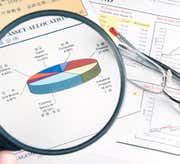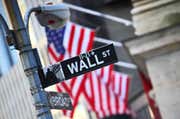Stock and commodity trading predate the invention of the computer – not to mention the telegraph and telephone. Pre-technology, the early exchanges were little more than informal gatherings of local businessmen who had interests in common, such as a wheat buyer and a wheat seller. Over time, the meetings became more formal and organized as the participants devised common rules and regulations. Eventually, open outcry evolved – a system where verbal bids and hand signals are used to convey information on the trading floors of the exchanges.
In 1969, Instinet (originally named Institutional Networks) launched the first automated system for U.S. institutions to bypass the trading floor and trade directly with each other on a confidential basis. Nasdaq appeared on the scene two years later, in 1971. Initially, it was an automated quotation system that allowed broker-dealers to see the prices other firms were offering – but trading was still handled over the phone.
DOT and SOES
Several years later, the New York Stock Exchange created the Designated Order Turnaround (DOT) system, which allowed brokers to route orders directly to specialists on the floor. In 1984, the next-generation SuperDOT emerged, allowing as many as 100,000 shares to be sent to the floor at once.
Eventually, Nasdaq offered its own automated trading system – the Small Order Execution System (SOES) – and other exchanges soon followed suit.
While open outcry is still used today to a limited degree, it has almost entirely been replaced by electronic systems that offer fewer errors, faster execution and better efficiency. Electronic trading dominates the financial world, and it can be helpful for investors and traders to understand how it works. To help you get started, here’s a quick look at electronic trading – including the exchanges and key technology.
Electronic Trading: The Exchanges
-
 Trading
TradingThe Death Of The Trading Floor
Electronic trading has almost completely replaced face-to-face human trading. -
 Personal Finance
Personal FinanceA Day In The Life Of A System Trader
Systems traders divide their time between trading, developing, backtesting, optimizing and forward testing, to create viable and high-probability trading systems. -
 Insights
InsightsThe NYSE and Nasdaq: How They Work
Learn some of the important differences in the way the NYSE and Nasdaq exchanges operate and the securities that trade on them. -
 Trading
TradingBasics Of Trading Systems
A trading system can save time and take the emotion out of trading, but adopting one takes skill and resources - learn more here. -
 Investing
InvestingStock Exchanges: A Global Tour
Check out the history and inner workings of the world's six most well-known stock exchanges.



